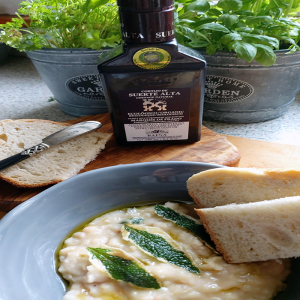QUICK READ
HOW TO SHOP FOR AN EXTRA VIRGIN OLIVE OIL
The main thing to remember is that HEAT, LIGHT and AIR are the enemies of Extra Virgin Olive Oil (EVOO) as the oil will go rancid when exposed to them. Therefore:
Don’t buy bottles that are in window displays (heat/light), behind fridges (heat) or near intense lighting, for example fluorescent lighting (heat/light).
Choose dark bottles or tins.
Check the Best Before Date. Count 18 months back from this date - this is the date that the oil was bottled and labelled. Buy the olive oil that is the youngest. Olive oil is the opposite of wine – the fresher the better.
Look at the label and see what information it contains:
- Acidity: the lower the acidity the better quality the oil (all extra virgins have to be below .8% acidity).
- Single Estate as opposed to ‘Blend of EU oils’.
- Awards: Is the award a current award? Every harvest is different so an award from the previous year is only about that harvest. However, if the brand has a history of winning year after year, it is very likely that the quality of the oil will be good.
- First cold pressing used to mean higher quality oil and the second pressing was of a lesser quality – however it means very little now as nearly all olive oil is cold extracted.
- Depending of the variety of olive, the flavour of the oil is different – check for the variety if they have listed it and any tasting or food pairing notes.
- Low cost oils are likely to be of lesser quality and flavour.
- Buy small quantities as once it is opened it will need to be used within a few months.
- Finally, taste the oil and see if you like it!
LONGER READ
Consumer knowledge can be quite limited, particularly in countries such as Ireland where there is little tradition of olive oil. Keeping in mind that light, heat and oxygen have a detrimental effect on oil is key to better understanding. It is best to avoid olive oil in glass bottles as they are not protected from light and therefore deteriorate more rapidly. Dark bottles or tins are a better choice. Deborah Krasner relates how she was told by a seller that olive oil in glass bottles can go rancid after eighty hours spent close to fluorescent light. When buying olive oil, the consumer should read all the information on the bottle, beginning with the best before date. This date is approximately eighteen months to two years after harvest/bottling and the buyer can therefore gauge how old the oil is. Extra virgin olive oil is at its best when young and fresh. Once the bottle has been opened, it is advisable to use it over a few months and it is better therefore to buy it in small quantities. They should also check if the oil comes from a single country of origin or is a blend of oils. Finally, a buyer should avoid low cost extra virgin olive oil and expect to pay a reasonable price for it. Judy Ridgway states ‘there is a definite relationship between quality and the cost of an oil. Low cost oils tend to be blends of mass-produced oils […] it is simply more expensive to produce high-quality premium oils’.
REFERENCES
Krasner, D. (2012). The Flavours of Olive Oil. New York: Simon & Schuster.
Poole, S. and Ridgway, J. (2016). The Olive Oil Diet. London: Hachette.
COOKING WITH EXTRA VIRGIN OLIVE OIL: CLICK HERE




